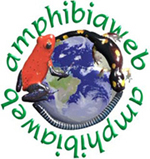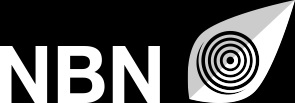If you know of any other links you think should be on this page, or find a broken link, please let us know. Thanks.
The Macaulay Library is the world’s premier scientific archive of natural history audio, video, and photographs. Although the Macaulay Library’s history is rooted in birds, the collection includes amphibians, fishes, and mammals, and the collection preserves recordings of each species’ behavior and natural history. Our mission is to facilitate the ability of others to collect and preserve such recordings and to actively promote the use of these recordings for diverse purposes spanning scientific research, education, conservation, and the arts.
The aim of CRIA is the dissemination of electronic information as a tool for the organization of the scientific and technological community of the country. It disseminates biological information of environmental and industrial interest and through this, hopes to contribute directly to the conservation and sustainable use of Brazil's biological resources. A sustainable society is an informed society, where various different sectors produce and have access to high quality information as a basis for decision making.
Initiative of the Ministry of Science, Technology and Innovation (MCTI), through its Secretariat for Policies and Research and Development Programs (SEPED), with technical support from the United Nations Environment Program (UNEP) and financial support from the Fund Global Environment Facility (GEF), the Brazilian Biodiversity Information System (SiBBr) is the first step for Brazil to consolidate a solid national data and biodiversity infrastructure.
DataONE is a community driven project providing access to data across multiple member repositories, supporting enhanced search and discovery of Earth and environmental data. DataONE promotes best practices in data management through responsive educational resources and materials.
The Digital Observatory for Protected Areas(DOPA)is a set of web services and interfaces that provides a large variety of end-users including park managers,park agencies, other decision-makers and researchers with means to assess, monitor and possibly forecast the state of and pressure on protected areas at multiple scales. Using reference datasets, DOPA is designed to encourage a cross-disciplinary approach to biodiversity without being exposed to excessive risks coming from mixing data from undocumented sources and/or with undocumented uncertainties.

GEO BON’s 2025 Vision Statement and Goals
Mission
Improve the acquisition, coordination and delivery of biodiversity observations and related services to users including decision makers and the scientific community.
Vision
A global biodiversity observation network that contributes to effective management policies for the world’s biodiversity and ecosystem services.

speciesLink is a distributed information system that integrates primary data from biological collections.
O Sistema Urubu é a maior rede social de conservação da biodiversidade brasileira. Ele é uma proposta do CBEE para reunir, sistematizar e disponibilizar informações sobre a mortalidade de fauna selvagem nas rodovias e ferrovias e tem por objetivo auxiliar o governo e as concessionárias na tomada de decisão para redução destes impactos.
The Map of Life assembles and integrates different sources of data describing species distributions worldwide. These data include expert species range maps, species occurrence points, ecoregions, and protected areas from providers like IUCN, WWF, GBIF, and more. All data assets are stored, managed, backed up, and accessed using a hosted cloud instance.
iDigBio is a resource for digitized information about natural history collections. iDigBio serves as the coordinating center; fosters partnerships and innovations; facilitates the determination and dissemination of digitization practices and workflows; establishes integration and interconnectivity among the data generated by collection digitization projects; and promotes the uses of biological/paleontological collections data by the scientific community and stakeholders including government agencies, educational institutions, non-governmental organizations (NGOs), and other national and international entities.
The Knowledge Network for Biocomplexity (KNB) is an international repository intended to facilitate ecological and environmental research.
VertNet is a NSF-funded collaborative project that makes biodiversity data free and available on the web. VertNet is a tool designed to help people discover, capture, and publish biodiversity data. It is also the core of a collaboration between hundreds of biocollections that contribute biodiversity data and work together to improve it.
The FishNet network is a collaborative effort among fish collections around the world to share and distribute data on specimen holdings.
HerpNET is a collaborative effort by natural history museums to establish a global network of herpetological collections data, funded by the National Science Foundation. The VertNet data portal replaced the HerpNET portal January 2015.
Over 5 million bird specimens are housed in North American collections, documenting the composition, distribution, ecology, and systematics of the world's estimated 10,000-16,000 bird species. Millions of additional observational records are held in diverse data sets. ORNIS addresses the urgent call for increased access to these data in an open and collaborative manner, and involves development of a suite of online software tools for data analysis and error-checking.
The Avian Knowledge Network (AKN) is a partnership of people, institutions and government agencies supporting the conservation of birds and their habitats based on data, the adaptive management paradigm, and the best available science. This site seems to be down (as of July 2018).
The Mammal Networked Information System. The original objectives of MaNIS were to 1) facilitate open access to combined specimen data from a web browser, 2) enhance the value of specimen collections, 3) conserve curatorial resources, and 4) use a design paradigm that can be easily adopted by other disciplines with similar needs.NOTE: (2013-10-16) The MaNIS community and data sources have been subsumed in VertNet.
The Global Biodiversity Information Facility (GBIF) is an international open data infrastructure, funded by governments. It allows anyone, anywhere to access data about all types of life on Earth, shared across national boundaries via the Internet. By encouraging and helping institutions to publish data according to common standards,

The Intergovernmental Science-Policy Platform on Biodiversity and Ecosystem Services (IPBES) is the intergovernmental body which assesses the state of biodiversity and of the ecosystem services it provides to society, in response to requests from decision makers. IPBES is placed under the auspices of four United Nations entities: UNEP, UNESCO, FAO and UNDP and administered by UNEP. Its secretariat is hosted by the German government and located on the UN campus, in Bonn, Germany. One thousand scientists from all over the world currently contribute to the work of IPBES on a voluntary basis. They are nominated by their government or an organisation, and selected by the MEP. Peer review forms a key component of the work of IPBES to ensure that a range of views is reflected in its work, and that the work is complete to the highest scientific standards.

AmphibiaWeb is an online system enabling anyone online to search and retrieve information relating to amphibian biology and conservation. This site was inspired by the global declines of amphibians, the study of which has been hindered by the lack of multidisplinary studies and a lack of coordination in monitoring, in field studies, and in lab studies.
Arctos is an ongoing effort to integrate access to specimen data, collection-management tools, and external resources on the internet. Arctos is both a community and a comprehensive collection management information system. As a community, it is a collaboration among multiple scientific collections that serves data on over 3M natural history museum records.
GenBank ® is the NIH genetic sequence database, an annotated collection of all publicly available DNA sequences. GenBank is part of the International Nucleotide Sequence Database Collaboration , which comprises the DNA DataBank of Japan (DDBJ), the European Molecular Biology Laboratory (EMBL), and GenBank at NCBI.
The Biodiversity Heritage Library improves research methodology by collaboratively making biodiversity literature openly available to the world as part of a global biodiversity community.
BHL also serves as the foundational literature component of the Encyclopedia of Life
The International Barcode of Life project (iBOL) is the largest biodiversity genomics initiative ever undertaken. Hundreds of biodiversity scientists, genomics specialists, technologists and ethicists from 25 nations are working together to construct a richly parameterized DNA barcode reference library that will be the foundation for a DNA-based identification system for all multi-cellular life.
The Consortium for the Barcode of Life (CBOL) is an international initiative devoted to developing DNA barcoding as a global standard for the identification of biological species.
The Catalogue of Life is the most comprehensive and authoritative global index of species currently available. It consists of a single integrated species checklist and taxonomic hierarchy. The catalogue holds essential information on the names, relationships and distributions of over 1.6 million species.
FishBase is a relational database with information to cater to different professionals such as research scientists, fisheries managers, zoologists and many more. FishBase on the web contains practically all fish species known to science.
The Integrated Taxonomic Information System. Here you will find authoritative taxonomic information on plants, animals, fungi, and microbes of North America and the world.
The aim of a World Register of Marine Species (WoRMS) is to provide an authoritative and comprehensive list of names of marine organisms, including information on synonymy. While highest priority goes to valid names, other names in use are included so that this register can serve as a guide to interpret taxonomic literature.
OBIS allows users to search marine species datasets from all of the world's oceans. Users can identify biodiversity hotspots and large-scale ecological patterns, analyze dispersions of species over time and space, and plot species' locations with temperature, salinity, and depth.
Conservation Evidence is a free, authoritative information resource designed to support decisions about how to maintain and restore global biodiversity. We summarise evidence from the scientific literature about the effects of conservation interventions such as methods of habitat or species management.
The Atlas of Living Australia is a collaborative, national project that aggregates biodiversity data from multiple sources and makes it available and usable online.
A dynamic reference portal, for researchers around the world who are interested in the biodiversity of Madagascar.
Kew's scientific databases includes Kew's collection databases, plant name resources and world checklists.
Established in 1964, the International Union for Conservation of Nature’s Red List of Threatened Species has evolved to become the world’s most comprehensive information source on the global conservation status of animal, fungi and plant species.
The Dryad Digital Repository is a curated resource that makes the data underlying scientific publications discoverable, freely reusable, and citable. Dryad provides a general-purpose home for a wide diversity of datatypes.
DEIMS, the (DrupalEcologicalInformationManagementSystem), is the unique place where you can find information about sites and data sets of networks dealing with ecological long term observation and experimentation in Europe and globally.
The National Biodiversity Network is a collaborative partnership created to exchange biodiversity information and involves many UK wildlife conservation organisations, government, country agencies, environmental agencies, local environmental records centres and many voluntary groups.
Species Observation System. A web-based, freely accessible reporting system and data repository for species observations, used by citizen scientists, scientists, governmental agencies and county administrations in Sweden and Norway.
The Habitat Institute
A non-profit scientific and educational organization offering insight for ways to enhance and sustain habitat(s) and their biodiversity through time, which is a necessary precondition for the well-being of mankind and our natural world.
ALL CATFISH SPECIES INVENTORY
Mission: To facilitate the discovery, description & dissemination of knowledge of all catfish species by a global consortium of taxonomists & systematists.
The National Ecological Observatory Network - NEON Biodiversity Data Portal is being developed to provide innovative access and discoverability to the entirety of NEON’s sample-based data products; including nearly 40 vertebrate, invertebrate, plant, microbial, and environmental sample collections. The majority of these samples are physically housed at the Arizona State University Biocollections, located in Tempe, Arizona.





























